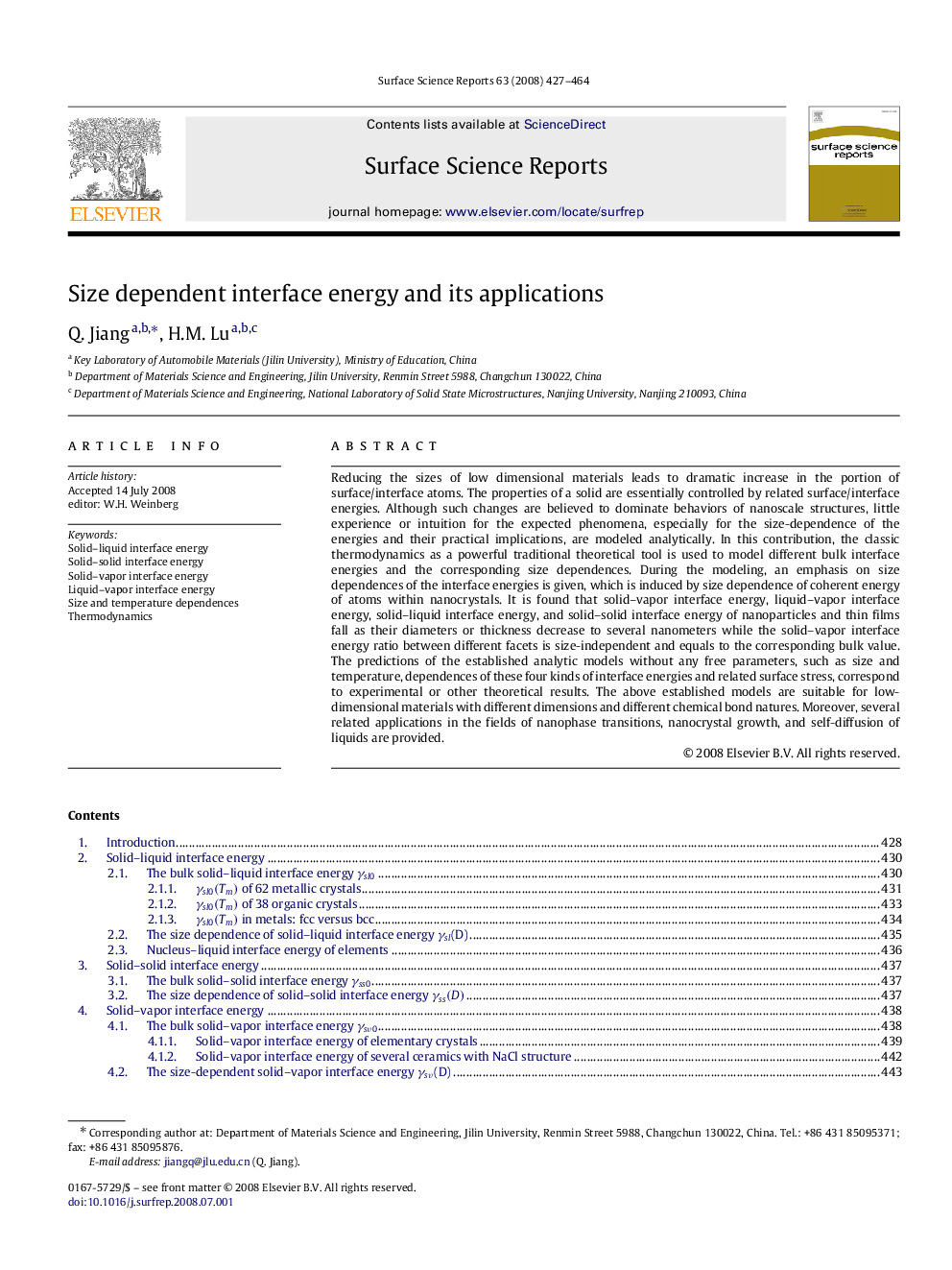| Article ID | Journal | Published Year | Pages | File Type |
|---|---|---|---|---|
| 7845529 | Surface Science Reports | 2008 | 38 Pages |
Abstract
Reducing the sizes of low dimensional materials leads to dramatic increase in the portion of surface/interface atoms. The properties of a solid are essentially controlled by related surface/interface energies. Although such changes are believed to dominate behaviors of nanoscale structures, little experience or intuition for the expected phenomena, especially for the size-dependence of the energies and their practical implications, are modeled analytically. In this contribution, the classic thermodynamics as a powerful traditional theoretical tool is used to model different bulk interface energies and the corresponding size dependences. During the modeling, an emphasis on size dependences of the interface energies is given, which is induced by size dependence of coherent energy of atoms within nanocrystals. It is found that solid-vapor interface energy, liquid-vapor interface energy, solid-liquid interface energy, and solid-solid interface energy of nanoparticles and thin films fall as their diameters or thickness decrease to several nanometers while the solid-vapor interface energy ratio between different facets is size-independent and equals to the corresponding bulk value. The predictions of the established analytic models without any free parameters, such as size and temperature, dependences of these four kinds of interface energies and related surface stress, correspond to experimental or other theoretical results. The above established models are suitable for low-dimensional materials with different dimensions and different chemical bond natures. Moreover, several related applications in the fields of nanophase transitions, nanocrystal growth, and self-diffusion of liquids are provided.
Related Topics
Physical Sciences and Engineering
Chemistry
Physical and Theoretical Chemistry
Authors
Q. Jiang, H.M. Lu,
